Were There Rules about the Colors of Wedding Dresses in the Song Dynasty?

When it comes to Chinese wedding dress in ancient costume dramas, some people will say that during weddings in the Song Dynasty, “women from lower – status families wore red when getting married, while those from higher – status families wore green.” And when seeing these wedding costumes of men and women that are as green as plantains, I just want to say: Don’t believe these ridiculous rumors made up by the audience! Over all these years of ancient costume movies and TV shows, it’s really hard to find a set of correct wedding costumes. At first glance, it seems that newlywed women always wear green and men always wear red.
I. Ancient Wedding Costumes Weren’t That Complicated
Let’s start with the conclusion. There was no such rule that one must wear red or green when getting married in the Song Dynasty! In fact, throughout the entire ancient history, there were no strict regulations on wedding costumes. That’s why people nowadays are confused about the wedding costume system, and there are more and more puzzling “rumors” popping up out of nowhere, as well as various scenes of “mixed – style” weddings in movies and TV shows. We see that in these TV dramas, women are all dressed in green and men are all in red. This may lead to a strange misunderstanding, that is, this is the standard template for weddings in the Song Dynasty. Moreover, many domestic wedding companies in China also design Hanfu for men and women in this way. It’s not to say that this is completely wrong, but it’s indeed not very friendly for popularizing the history of the Song Dynasty.

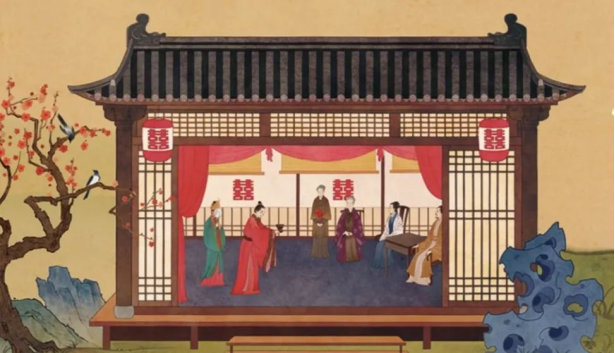
So, what should people wear when getting married? In simple terms, in ancient times, officials and the wives of officials with honorary titles had corresponding strict dress codes for formal attire, and these attires had specific usage scopes according to the particular scenes defined in the Five Rites. Weddings and coming – of – age ceremonies were all grand occasions within the category of auspicious rites. Generally speaking, those with official ranks wore official uniforms. In the Song Dynasty, during ordinary people’s weddings, in special permitted periods, they were also allowed to wear the clothing of honorary wives of lower ranks to complete such a wedding, which might be a once – in – a – lifetime event.
Ⅱ. Situations Where Men Wear Green
So, in what situations would people wear green during weddings? In the Song Dynasty, the lowest rank of official uniforms was the green robe. In addition, newly – admitted scholars would be bestowed with green robes. Therefore, it is correct for the third – place scholar (a man) to wear a green hanfu. In Volume 1 of Records of Strategies for the Future Inherited from the Ancestors (《燕翼诒谋录》) written by Wang Yong (王栐) of the Song Dynasty, it is recorded: “Five days after the banquet that year, on the day of Guichou, an imperial edict was issued to bestow green robes, boots, and tablets to the newly – admitted scholars and those from various imperial examinations.” In the article “Scholars Attending the Palace Examination and Announcement of Names” in Volume 3 of Dream of Liang (《梦粱录》) written by Wu Zimu (吴自牧) of the Song Dynasty, it is recorded: “Waiting for the emperor to preside over the announcement of names in the Wendian Hall. When the papers of the top three scholars were presented, the emperor would personally see the top three scholars… Then they would be invited to the place where the top scholar waits on duty and change into the green robes, boots, and tablets bestowed by the emperor.” It is also recorded: “According to the imperial favor, each of them was bestowed with a purple sachet, a golden belt, boots, and hu (ritual baton).”

Ⅲ. Situations Where Women Wear Cyan
Women don’t need to wear green along with men. According to the standards for the wives of officials with honorary titles, they should wear cyan. Cyan comes from indigo but is bluer than indigo. Note that it’s cyan, not green. From the Sui and Tang dynasties to the Song and Ming dynasties, cyan had always been a high – grade color for women’s formal attire. The Song Dynasty followed the systems of the Tang Dynasty. Among the formal dresses, the empress wore the “Huiyi (袆衣)” robe, the crown princess wore the “Diyi” robe. For the wedding dresses of honorary wives of other ranks and common women, according to their statuses, they were mainly divided into the “Juyi (鞠衣)” robe, the “Huadian Chailiyi” (花钿礼衣), the “robe with large sleeves and a skirt attached”, etc., all of which were cyan. And dark cyan was considered more precious.
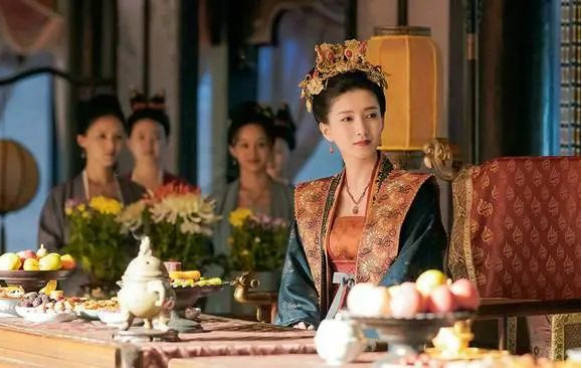
Therefore, it can be seen that from the daughters of princes and nobles to those of common people, if they followed the etiquette system, whether the bride’s dress belonged to which level, a cyan robe, a leather belt, and cyan shoes and socks were essential elements.
Some people may confuse cyan and green. In ancient times, cyan and green were completely different colors. In Wenxian Tongkao written by Ma Duanlin of the Yuan Dynasty, it is said: “Using purple, cyan, and green as formal hanfu for officials originated from Emperor Yang of the Sui Dynasty, and the system was finally determined in the Tang Dynasty.” Generally speaking, since the Sui and Tang dynasties, colors such as purple, red, green, and cyan were used to determine the official ranks. Here, cyan and green are listed separately, which shows that the ancients had already distinguished between these two colors. Later, in the official uniform system of the Song Dynasty, the cyan official uniforms were removed, and green became the lowest – ranked color for official uniforms.
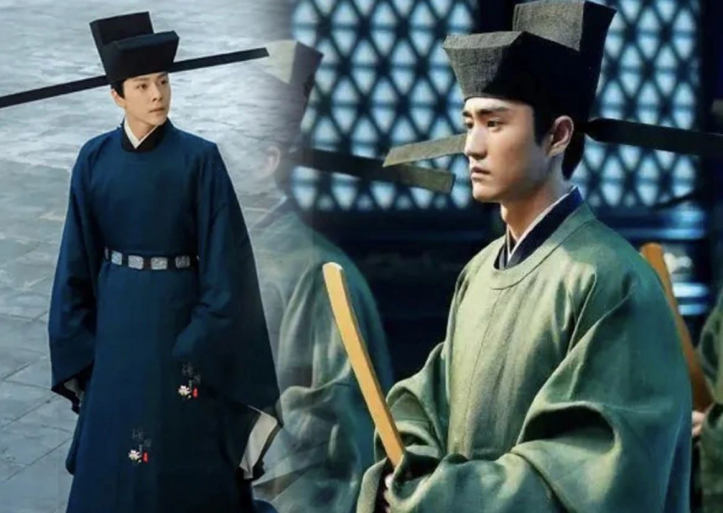
Ⅳ. Situations Where Men Wear Red
According to the official system of the Song Dynasty, if a man wore a red official uniform, which was in the style of a large – sleeved official robe in crimson color, then his official rank had to be at the fifth or sixth grade. Therefore, the red large – sleeved official robe and the official hat couldn’t be worn casually. And it’s even more difficult to comment on the color green, because green was not a official color (正色), and it was even considered a lowly color. Without some clear regulations on the colors of official uniforms, most people would still think that green looked a bit frivolous.
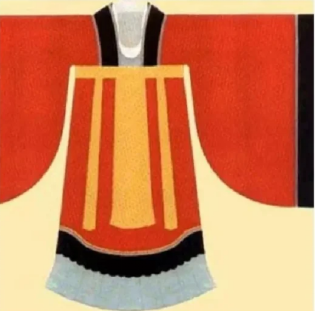
In addition, it should be noted that, different from the Song Dynasty, common men in the Tang Dynasty could wear red on their wedding days. In the Tang Dynasty, it was a plain red “Jianggongfu” (绛公服, as shown in the picture above), which was paired with a plain “Daxiu Lianchang” to form the combination of “Jiang for men and cyan for women” (as recorded in The Six Codes of the Tang Dynasty 《唐六典》: “For common people’s weddings, they could borrow the Jianggongfu”). Moreover, it’s important to mention that before the Ming Dynasty, people didn’t have such a strong obsession with wearing red for weddings. It is said that during the Hongwu (洪武) period of the Ming Dynasty, officials from the Ministry of Rites put forward the theory of the Five Elements of Colors for official attire, believing that the Ming Dynasty belonged to the element of fire and should favor the color red. Only in the Ming Dynasty was there a strong requirement to wear red for formal attire.
Ⅴ. Women’s Wedding Dresses Only Need to Be in Primary Colors
If women didn’t consider their ranks, there weren’t so many requirements for the colors of their wedding dresses. As long as they didn’t wear styles that exceeded the proper etiquette like the Diyi robe and some colors that were taboo in the Song Dynasty, it would be fine. Unmarried women without children generally didn’t have the imperial – bestowed official dresses unless they received special grants. So basically, if they weren’t from the royal family, the highest level of dress they could wear was the cyan large – sleeved Xiapei robe, which was the formal dress for honorary wives of the lowest rank. For other colors that were not offical colors, they could be used as ordinary formal dresses, but if used as wedding dresses, it would be considered disrespectful.
What are the offical colors (正色)? This was explained in a previous blog. Here is some popular science: they are white, cyan, black, red, and yellow. If you are interested, you can click here to jump to the article about the popular science of colors.
Summary
In summary, in the Song Dynasty, men with official positions wore the corresponding official uniforms. During special permitted periods, men without official positions could choose to wear the lowest – ranked green robes or civilian clothing styles in colors that were not taboo and could be freely selected. As for women, if they followed the standards for the wives of officials with honorary titles, they should wear cyan clothes with Xiapei shawls (霞帔). They could also wear civilian clothing styles in colors that were not taboo and could be freely chosen.
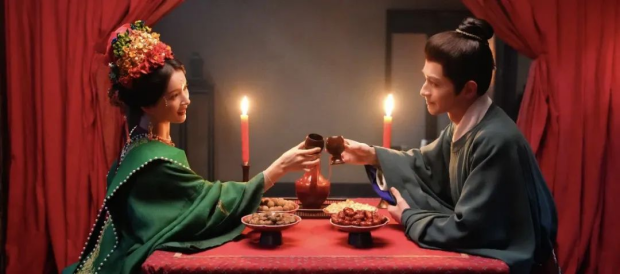
After getting all these things clear, when we look at these movies and TV shows that claim to be particular about costumes, makeup, and props, it’s fine if they freely choose colors and piece together outfits just for their own enjoyment. However, they should stop spreading these rumors like “wearing different colors depending on whether one marries into a higher or lower – status family”, “men in red and women in green”, and “concubines wearing green”. Otherwise, how could we explain why, after all these years of ancient costume dramas, it’s still impossible to put together a pair of correct Chinese wedding dress?
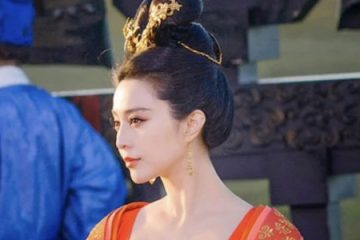
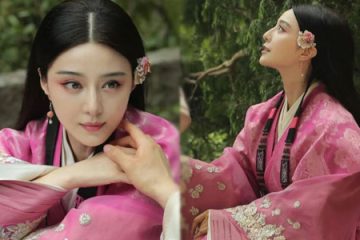
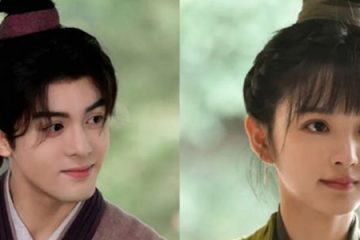
0 Comments